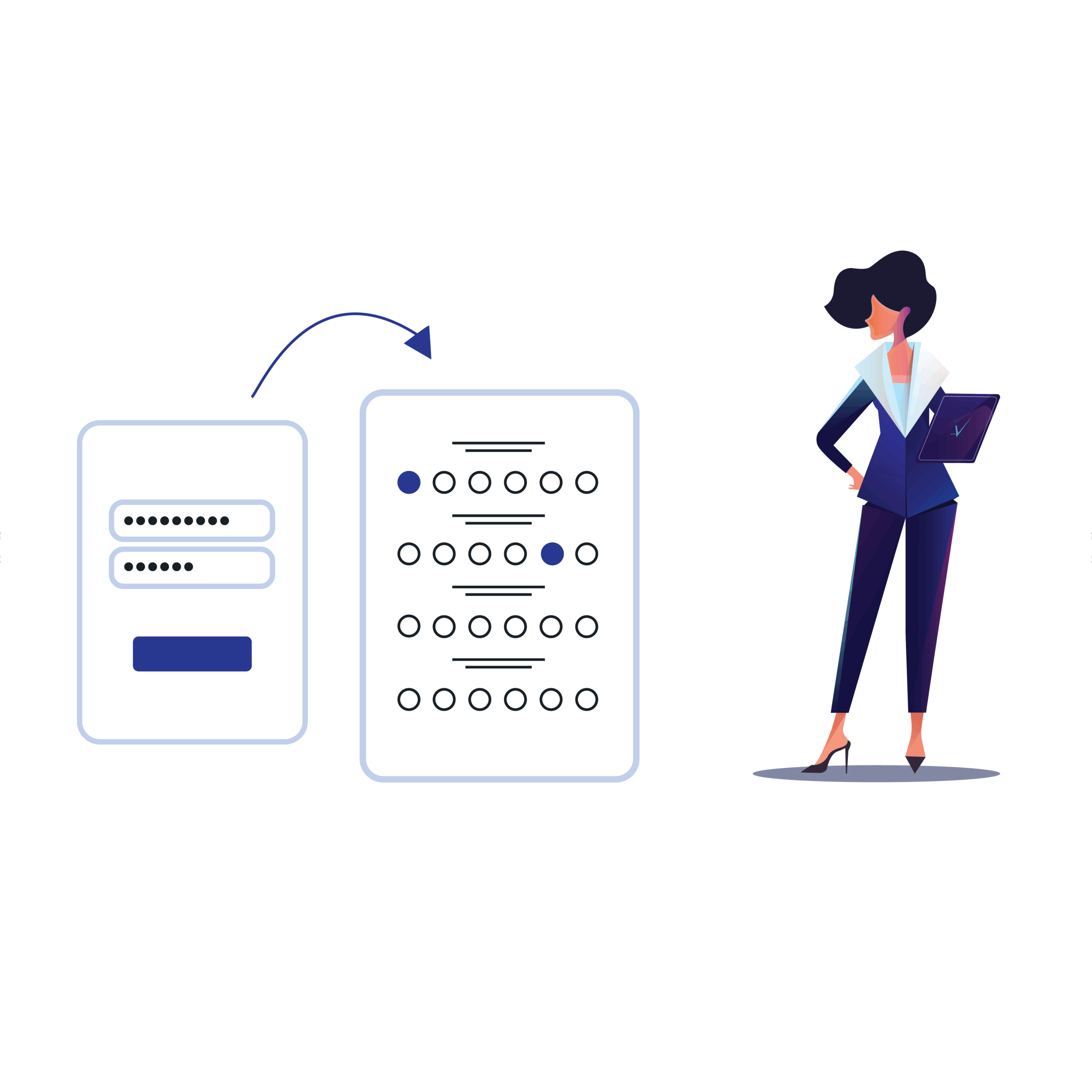Services
Does your organization stand out through high-quality products, services, and processes?
Identifying, recruiting, developing, and retaining the best employees represents the most significant objective and challenge in organizational human capital management, as these exceptional employees are the ones who ensure the delivery of high-quality products, services, and processes that meet growing customer expectations and build the trust that drives client loyalty in today’s increasingly quality-conscious market.
Following a strategic HC audit and based on its results, EVA helps companies assess their current situation, plan improvements using ISO standards, and effectively implement changes through ID37 individual motivation analysis. This enables companies to introduce innovations with motivated employees and active engagement.

Evaluation
HC and organizational audit
HC and organizational audit aims to analyze the compliance of HCM activities with the organization’s strategy, international standards, and legislation. Audit assesses the readiness of the HCM function to meet expectations or the goals set by the organization for the future.
HC audit focuses on the examination, assessment and analysis of the following areas:
HC Strategy:
Assessment of the alignment of HC and organizational strategy
Culture and Value:
Assessment of Organizational culture
HCM systems:
Planning, Assessment, Human Capital reporting, Learning and Development, Salary and Benefits
HCM Competency:
Assessing the competence of key function holders, including the knowledge, experience, and skills of HR staff.
HCM Impact:
The impact of HCM activities on cost reduction, innovation (development of new directions), profit growth, and talent management.

Improvement
Implementation of ISO 30414 standard
Human Capital Reporting ISO 30414 − is the first international standard allowing an organization to clearly understand the real contribution of its human capital to business success.
In today’s business environment, where human capital represents the primary source of competitive advantage, the ISO 30414 standard is becoming an increasingly significant instrument for organizations. It not only assists them in better measuring and managing their human resources, but also facilitates the development of an organizational culture founded on transparency, accountability, and continuous improvement.
ISO 30414 contains 60 HR metrics, 11 in key directions:
- Compliance and ethics
- Cost
- Diversity
- Leadership
- Organisational culture
- Organizational health, safety and well-being;
- Productivity;
- Recruitment, mobility and turnover;
- Skills and capabilities;
- Succession planning;
- Workforce availability.
Through implementing HR metrics, HR professionals are able to substantiate their requests for changes and thereby influence and contribute to strategic planning and decision-making.
By effectively implementing human capital analytics, it becomes possible to: influence business partners and key stakeholders, increase the frequency of data- and evidence-based decision-making within the company, strengthen collaboration with top management, and make communication transparent and effective.”
Strategic management and redesign of the organization
After completing the audit, through our support, your company takes the next crucial steps: setting clear strategic goals and creating an organizational structure that actually supports achieving them.
Defining Your Direction First, we work with you to establish your company’s core foundation – your mission (why you exist), vision (where you’re headed), and values (what guides your decisions). These aren’t just words on a wall; they become the compass for every business decision.
Optimizing Your Structure Next, we examine how each department and team fits into the bigger picture. We map out what each area does and how it connects to your strategic goals. Think of it as making sure all the gears in your organization actually work together smoothly.
Delivering Results Based on our analysis, you’ll receive practical recommendations and a concrete plan for your optimized structure – not just theory, but a working blueprint you can implement.
EVA follows internationally recognized ISO 9001 and ISO 30414 standards throughout this strategic management and organizational redesign process, ensuring quality and best practices every step of the way.

Motivation
Corporate culture and Employee motivation
Corporate culture is a mixture of individual cultures, experiences and values that create a working atmosphere, which in turn is reflected in the interaction of employees and their behavior with customers. As a result of the formation of a healthy corporate culture, the organization becomes open, flexible and accessible. Employees fully embrace the company’s vision and mission and, through a jointly created strategy, strive for the sustainable development of the organization.
ID37 – Analysis of individual motives helps us better understand the reasons for thinking and behavior, become development-oriented and form effective teams that will jointly realize the set strategic goals.
We offer essential tools for establishing a healthy corporate culture, which includes organizational culture assessment utilizing the ISO 30414 standard and individual motivation analysis based on ID37 test results.
The ID37 personality assessment is an evidence-based procedure that identifies the structure of personal motivations and explains individual habits and behaviors.
This type of analysis at the organizational level enables team analysis and effective formation based on the personal motivations of constituent individuals. It also facilitates the creation of efficient and individually tailored career development plans.
ID37 individual motivation analysis helps us better understand the drivers behind thinking and behavior patterns, become development-oriented, and form effective teams that collectively achieve strategic objectives through unified efforts.
Based on the results, we design leadership and team development programs, conduct working sessions and individual coaching sessions, and manage goal-oriented team building activities.



